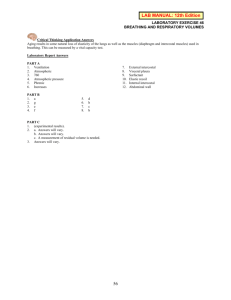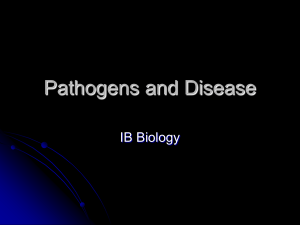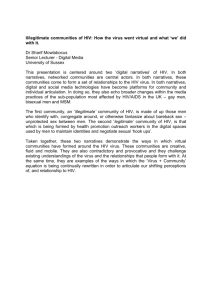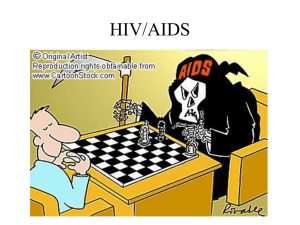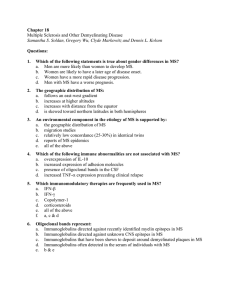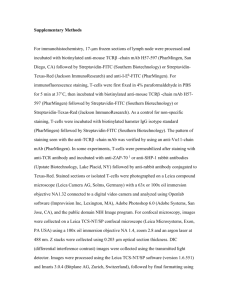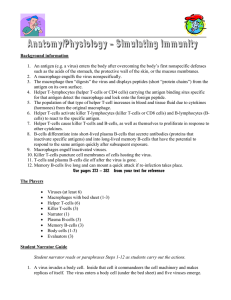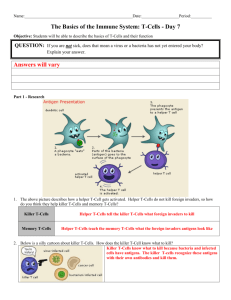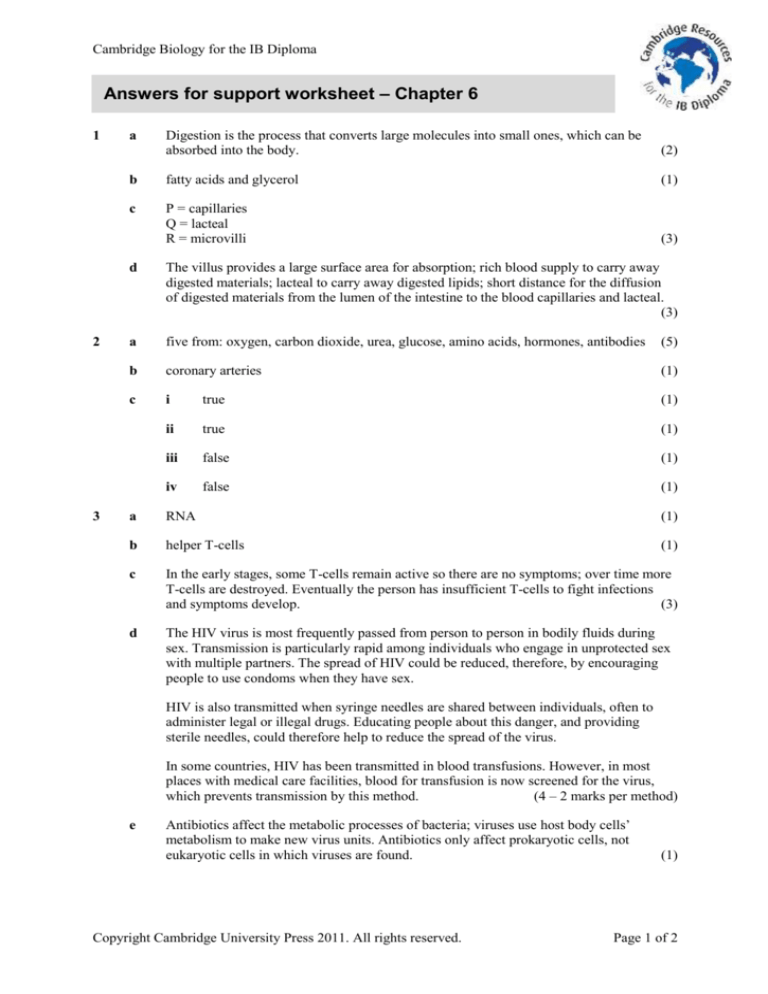
Cambridge Biology for the IB Diploma
Answers for support worksheet – Chapter 6
1
2
3
a
Digestion is the process that converts large molecules into small ones, which can be
absorbed into the body.
(2)
b
fatty acids and glycerol
(1)
c
P = capillaries
Q = lacteal
R = microvilli
(3)
d
The villus provides a large surface area for absorption; rich blood supply to carry away
digested materials; lacteal to carry away digested lipids; short distance for the diffusion
of digested materials from the lumen of the intestine to the blood capillaries and lacteal.
(3)
a
five from: oxygen, carbon dioxide, urea, glucose, amino acids, hormones, antibodies
(5)
b
coronary arteries
(1)
c
i
true
(1)
ii
true
(1)
iii
false
(1)
iv
false
(1)
a
RNA
(1)
b
helper T-cells
(1)
c
In the early stages, some T-cells remain active so there are no symptoms; over time more
T-cells are destroyed. Eventually the person has insufficient T-cells to fight infections
and symptoms develop.
(3)
d
The HIV virus is most frequently passed from person to person in bodily fluids during
sex. Transmission is particularly rapid among individuals who engage in unprotected sex
with multiple partners. The spread of HIV could be reduced, therefore, by encouraging
people to use condoms when they have sex.
HIV is also transmitted when syringe needles are shared between individuals, often to
administer legal or illegal drugs. Educating people about this danger, and providing
sterile needles, could therefore help to reduce the spread of the virus.
In some countries, HIV has been transmitted in blood transfusions. However, in most
places with medical care facilities, blood for transfusion is now screened for the virus,
which prevents transmission by this method.
(4 – 2 marks per method)
e
Antibiotics affect the metabolic processes of bacteria; viruses use host body cells’
metabolism to make new virus units. Antibiotics only affect prokaryotic cells, not
eukaryotic cells in which viruses are found.
Copyright Cambridge University Press 2011. All rights reserved.
(1)
Page 1 of 2
Cambridge Biology for the IB Diploma
4
When a person breathes in, the diaphragm contracts and changes from a domed shape to a flat
shape. At the same time, the external intercostal muscles contract and the internal intercostal
muscles relax. This moves the ribcage upwards and outwards, increasing the volume of the
thorax. Pressure inside the thoracic cavity decreases, which means that the lungs increase in
volume and this reduces the pressure in the alveoli where gas exchange takes place. Air rushes
in through the nose, down the trachea and bronchi to adjust the pressure. When a person
breathes out, the diaphragm and abdominal muscles relax and the external intercostal
muscles relax. The pressure in the thorax increases and air is forced out of the lungs.
5
(16)
a
brain and spinal cord
(2)
b
motor neurons
(1)
c
i
in a synapse between the ends of two neurons, or between the end of a neuron and
an effector
(1)
ii
covering the axon of a motor neuron
(1)
iii
at the end of a motor neuron where it meets an effector (such as a muscle)
(1)
d
Enzymes and metabolic processes work best within narrow limits; if the body
temperature moves away from this optimum temperature, metabolism will be affected. (2)
e
Hormones are produced in endocrine glands and carried to their target cells by the
blood. The hormone insulin is produced in the β (beta) cells of the pancreas and it helps
to control blood sugar level. A person who does not produce insulin suffers from the
condition known as diabetes.
6
a
b
c
(5)
i
A – eggs are produced in the ovaries.
(1)
ii
C – fertilisation usually happens in one of the oviducts.
(1)
iii
A – estrogen and progesterone are produced in the ovaries, when a woman is not
pregnant (strictly, by the follicle and corpus luteum, but these not shown
specifically on the diagram).
(1)
i
Estrogen is shown by the dotted line in the lower graph, which peaks at about
day 13.
(1)
ii
Progesterone is shown by the dashed line in the lower graph, which rises gently
during the second half of the cycle, and begins to fall again at around day 26. (1)
iii
The cross denoting ovulation should be at day 14.
(1)
IVF may have unforeseen consequences to the health of the child; there are many
unwanted babies who could be adopted; religious reasons (interfering with a natural
process); or other suitable suggestions.
Copyright Cambridge University Press 2011. All rights reserved.
(3)
Page 2 of 2

